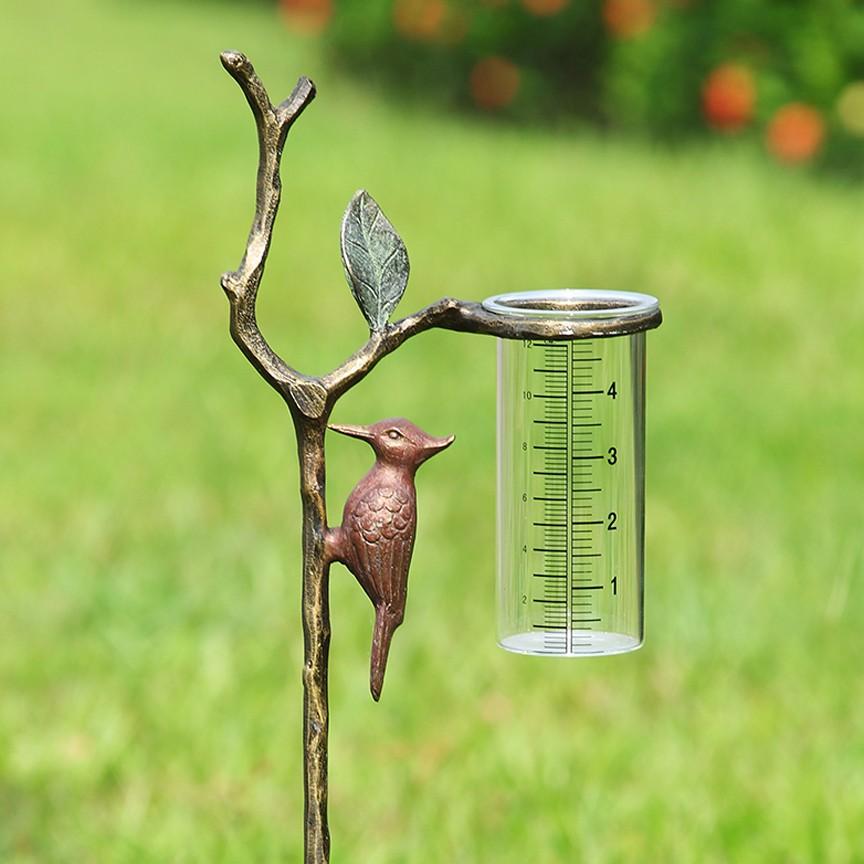Rain Gauge Purchasing Overview: What You Required to Know for Optimal Performance
Rain Gauge Purchasing Overview: What You Required to Know for Optimal Performance
Blog Article
Introducing the Science Behind Rain Assesses: How These Devices Play a Critical Role in Environment Study and Ecological Monitoring
Rainfall gauges, relatively easy gadgets, hold an extensive importance in the realm of environment research and ecological tracking. These unassuming instruments quietly accumulate one of nature's most necessary elements-- rainfall. Behind their plain facade lies a complicated science that is crucial for understanding the characteristics of our environment. As we peel off back the layers of this scientific shroud surrounding rainfall assesses, we reveal a globe where precision, data accuracy, and thorough monitoring merge to unveil a deeper understanding of our changing environment and its influence on the world.
Importance of Rainfall Scales
Rain determines play a vital function in monitoring and gauging rainfall levels, giving crucial information for climate study and analysis. These devices are fundamental in quantifying the quantity of rainfall that occurs in a certain area over a particular period. By collecting and determining rain, rain gauges offer valuable understandings into the circulation and intensity of rainfall, helping meteorologists, hydrologists, and climatologists in understanding weather condition patterns and trends.
One of the crucial reasons rainfall evaluates are important is their ability to give localized and exact data. Unlike satellite or radar-based measurements, which offer more comprehensive observations, rainfall determines deal precise info details to the area where they are put. This local data is vital for different applications, consisting of flooding forecasting, drought tracking, and water source administration. Additionally, lasting information collected from rainfall evaluates aids in assessing environment adjustment impacts and patterns, adding substantially to scientific research and decision-making processes. In significance, rainfall assesses work as vital devices in the area of weather forecasting and environmental scientific research, playing a vital function beforehand our understanding of climate and climate dynamics.
Kinds Of Rainfall Scales

Functionality and Operation
In the realm of environment research and atmospheric studies, the efficiency of rain evaluates hinge on their detailed capability and accurate functional mechanisms. Rainfall determines are created to accurately measure the quantity of precipitation that tips over a particular area during a set duration. These devices commonly consist of a channel that gathers rain and networks it into a determining tube. The measuring tube is marked with adjusted measurements that permit the accurate quantification of rains.
The capability of rainfall assesses is based upon the principle of accumulating and determining rain in a standard manner. This gathered information is crucial for comprehending neighborhood weather condition patterns, tracking long-lasting climate fads, and evaluating ecological effects. To make certain accurate dimensions, rainfall gauges demand to be purposefully positioned in open locations away from obstructions such as structures i loved this or trees that might hinder the collection procedure.
The operational facet of rain assesses includes routine maintenance to stop debris buildup, calibration checks to maintain measurement precision, and data tape-recording for evaluation (rain gauge). On the whole, the functionality and click this site procedure of rain evaluates are crucial for gathering reliable precipitation data essential to climate research study and ecological surveillance
Role in Climate Research
Provided the essential relevance of precise rainfall dimensions in recognizing weather patterns and ecological impacts, the duty of rainfall assesses in climate study is important. Rainfall determines offer crucial data for climate research by quantifying the quantity of rainfall that tips over a details area during a provided period. This information is essential for checking long-lasting trends in rainfall patterns, examining the influence of climate modification on rainfall distribution, and boosting environment models.

Environment scientists make use of data collected from rain assesses to examine variations in precipitation levels, identify regional climate fads, and evaluate the effectiveness of water resource administration techniques. By contrasting historical precipitation information with existing measurements, researchers can index discover changes in precipitation patterns, such as adjustments in the regularity or intensity of rainfall occasions. This information is crucial for understanding just how climate adjustment is influencing precipitation dynamics and can aid policymakers make informed choices relating to adaptation and mitigation strategies.
Applications in Environmental Surveillance

In flooding forecasting, rain scale data aids to track rainfall strength and circulation, permitting authorities to release prompt warnings and take essential procedures to mitigate flooding risks (rain gauge). Drought tracking counts on rain scale information to examine wetness levels in the dirt and track rainfall deficits, aiding in the identification of drought-prone locations and the application of drought feedback approaches
Additionally, rain gauge information plays a crucial function in water source management by offering details on water availability and usage trends. In addition, in agriculture, rainfall gauge information assists farmers in optimizing irrigation schedules, plant selection, and general farm management techniques based on local rainfall patterns.
Verdict
To conclude, rainfall gauges are vital tools for determining precipitation, giving useful information for environment study and ecological surveillance. With numerous types and functionalities, rain gauges play an important function in comprehending precipitation patterns and their effect on the environment. By accurately gauging rains, these gadgets add to the innovation of scientific understanding and help in making notified decisions pertaining to water source administration and disaster preparedness.
Rain evaluates play a vital role in monitoring and determining precipitation degrees, offering essential data for environment research study and analysis. The typical rainfall gauge, known as the "tipping pail" gauge, is one of the most typically used tools. Ultrasonic rainfall assesses use noise waves to spot the existence of rain, offering real-time information on rainfall levels.Climate researchers make use of data accumulated from rain gauges to examine variants in precipitation degrees, identify local climate patterns, and review the efficiency of water resource monitoring techniques.In verdict, rain gauges are vital tools for determining rainfall, offering beneficial data for climate research and environmental monitoring.
Report this page